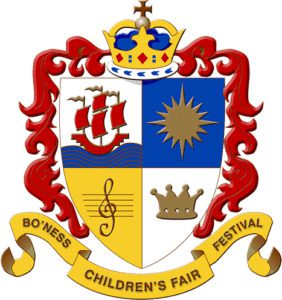Not the Co-op, but the railway!
The history of the Bo’ness Branch begins with the Slammanan Railway which was formed between 1826 and 1840. The Bo’ness branch took off from that line when an Act of Parliament for the construction of ” The Slamannan and Borrowstounness Junction Railway ” was obtained in 1846 and the line was open by April 1851.
The trustees of the harbour at Bo’ness were anxious to have a railway to serve the port as it had been losing ground. In the 17th century Bo’ness was one of the main ports in Scotland, second only to Leith and had a sizable trade with the Netherlands and France.
In 1790 the Forth and Clyde Canal was opened and naturally a port was bound to develop at its exit, therefore Grangemouth came into prominence. This was a severe blow to Bo’ness because up to that time it had been the head port on the Forth. The trustees thought that the railway might help to recover some trade for the harbour and town of Bo’ness.
When the Bo’ness branch was first opened the controlling company was the Monkland Railways. This grew out of an amalgamation of a system of older lines – the Slamannan, the Monkland and Kirkintilloch (1826) and the Ballochney (1828). For several years the Bo’ness branch was the responsibility of the Edinburgh and Glasgow Railway until in 1865 that line was taken over by the North British Railway.
In 1876 the Harbour Commissioners of Bo’ness had a new pier and wet dock built at a cost of £200,000, thereby increasing the total water area to 13 acres. From 1850 to 1880 the port of Bo’ness was acknowledged to be the third largest in Scotland. The Bo’ness docks became the property of the North British Railway Company in 1899 – hence Bo’ness was very much a North British preserve. During ” N. B. ” ascendancy at Bo’ness, that railway company rebuilt and lengthened the quays, increasing the depth of water at several berths and new equipment was installed in 1910 to improve cargo handling. A great network of railway sidings amounting to some six miles covered the quays.
After the 1923 groupings the Bo’ness branch and the port became part of the L.N.E.R. The import cargoes were mainly timber sleepers, pitprops and flooring, but scrap steel and metal ores were also handled.
Coal and machinery were the principal exports. The trade of Bo’ness suffered in the Second World War cut it off from its European suppliers and markets. It never really recovered from this phase and continued to suffer in competition with Grangemouth. The last passenger train set out from the original Bo’ness Station in May, 1956, and shortly after that event the harbour was officially closed. The Bo’ness branch was severed and the sidings were lifted in the port. Coal traffic from Kinneil Colliery continued to be hauled up the remainder of the Bo’ness branch until recently when part of that line too was lifted. With the opening of the Bo’ness and Kinneil Railway we have come full circle and steam hauled trains are now back on the foreshore after an absence of 25 years. This is a remarkable turn of events and the steam centre will undoubtedly put Bo’ness on the tourist map and attract attention to the town.
Dr I. A. GLEN.






